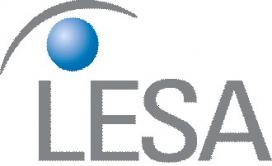Using a MEMS Mirror to Provide Laser Lighting with Integrated MEMS Light Field Control
TheCenter for Lighting Enabled Systems & Applications (LESA), an NSF-funded Engineering Research Center (ERC) headquartered at Rensselaer Polytechnic Institute (RPI), designed and used a MEMS mirror to redirect and reshape the illumination profile of a computer-controlled three-laser RGB light source coupled with a multimode fiber.
The research demonstrates how lasers can generate illumination-quality light, redirected via flexible fiber optic distribution, and reshaped and delivered within a lighting environment. This discovery has enormous implications for the future of solid-state lighting. Using a fiberoptic cable to distribute light can help reduce costs and increase flexibility of deploying light.
From a communications standpoint, MEMS can be used to enhance the signal-to-noise ratio (SNR) of a projected VLC channel by controlling the light intensity in the beam. By shaping the profile of the source dynamically, LESA showed an improvement in VLC SNR of a directed 660 nm laser diode data link by more than 40 dB at a distance of 3.5 meters.
The researchers also modulated the laser signal using on/off keying (OOK) at 10 Mb/s, much lower than the laser is capable of, limited only by the bandwidth of the detector. Using very high speed, high responsivity detectors under development by the Center, high-performance VLC data rates much greater than 5 GHz can be realized with tracking capabilities that enable mobile VLC links.
The research draws on a growing trend in the lighting industry, as lasers and superluminescent LEDs (SLDs) are gaining momentum in part because of the much lower etendue (a number that describes the geometrical limit to how much light can pass through an optical system), but also because laser diodes do not suffer from efficiency droop, as LEDs do.



